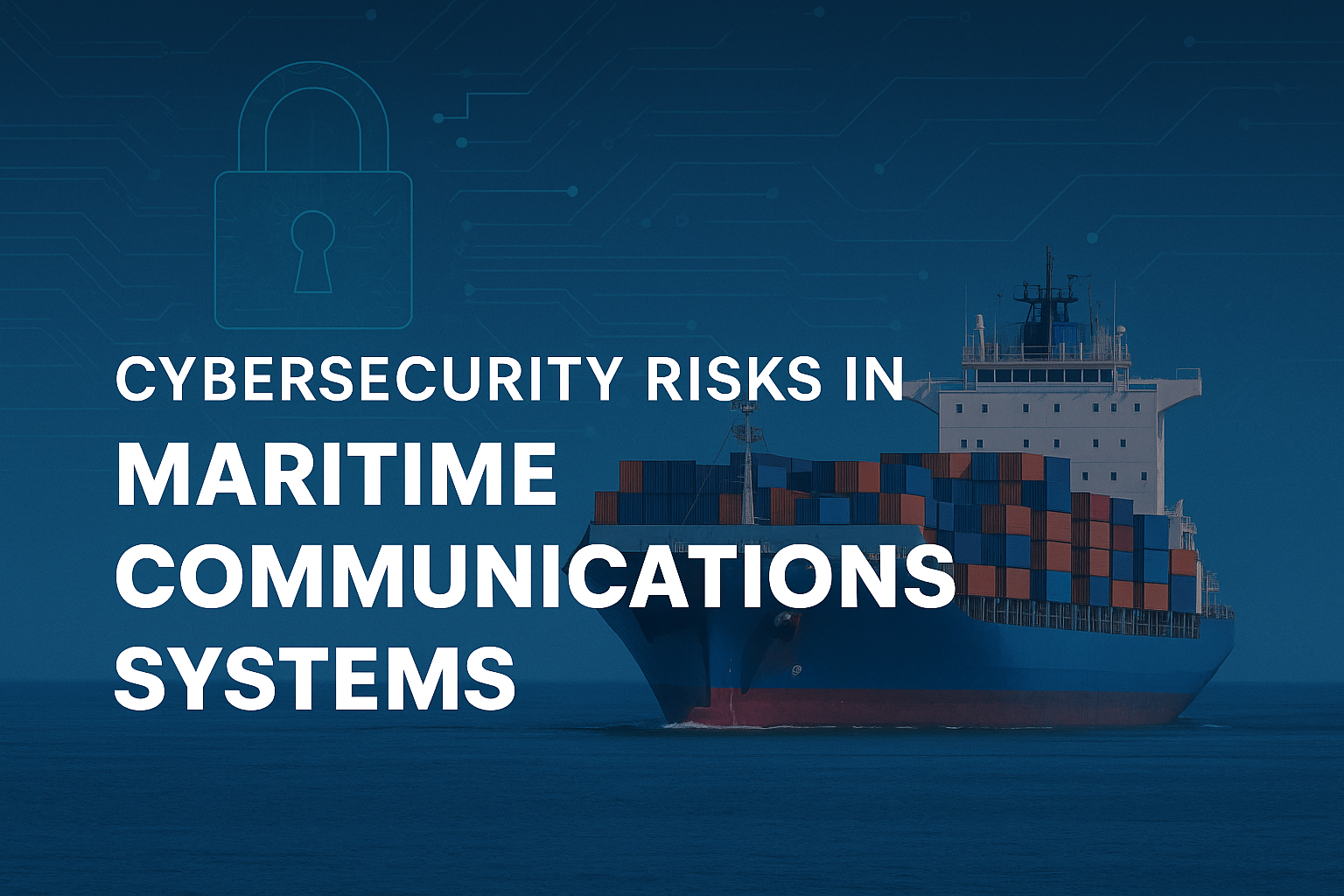Modern vessels are more connected than ever before—and with that connectivity comes unprecedented cybersecurity risk.
Satellite communications, GPS, AIS, and ECDIS systems now operate in tightly integrated environments powered by IoT and OT technologies. But with every connection point comes an opportunity for cyber intrusion. In fact, the maritime sector has seen a staggering 900% increase in breaches on operational technology systems in recent years.
From legacy systems to phishing threats and regulatory gaps, the vulnerabilities in maritime communications infrastructure are vast—and the consequences can disrupt global trade in an instant.
Key Cybersecurity Challenges in Maritime Communications
Increasing Digitization and Connectivity
The digitization of maritime systems has created more efficient and responsive operations—but also exposed vessels and ports to cyberattacks like data hijacking, GPS spoofing, and ransomware. The more connected the systems, the wider the attack surface.
Vulnerabilities in Legacy Systems
Many maritime communications platforms weren’t built for today’s internet-connected reality. These legacy systems often lack basic safeguards like encryption or authentication, leaving them wide open when integrated with modern digital infrastructure.
Human Factors
Maritime crews often receive little to no cybersecurity training. This creates easy entry points for attackers using phishing—still the most common vector in the sector. Weak password hygiene, shared credentials, and unpatched devices further compound these risks.
Impact of a Breach
Cyberattacks on communications systems can cause real-world consequences: stranded ships, port congestion, and massive trade disruptions. One notable example is the ransomware attack on the Port of Nagoya in July 2023, which paralyzed operations and affected 10% of Japan’s trade volume.
Regulatory and Compliance Gaps
While frameworks like the IMO’s cyber risk management guidelines and the ISPS Code exist, adoption and enforcement remain inconsistent. Many maritime organizations still lack a comprehensive cybersecurity policy for their communications systems.
Strategies for Securing Maritime Communications Systems
1. Adopt a Zero-Trust Security Model
Trust no device, user, or connection by default. Implement MFA, SSO, and identity-based access controls across all systems. Use solutions like Cyolo’s trustless architecture to secure air-gapped and legacy platforms.
2. Strengthen Network Security
Deploy firewalls, IDPS tools, and encryption protocols like SSL/TLS or VPNs to protect ship-to-shore communications. Tools like TXOne’s Stellar can detect network anomalies in real time, identifying threats before they escalate.
3. Secure Satellite and Radio Communications
Work with providers like Inmarsat to ensure uplinks and ship reporting systems meet high cybersecurity standards. Research suggests blockchain may enhance communication integrity in autonomous vessels.
4. Build Cyber Awareness
Train both crew and shoreside personnel to recognize phishing threats and follow cybersecurity best practices. Despite growing risk awareness, only 42% of maritime organizations currently protect their OT environments.
5. Close Compliance Gaps
Follow key international frameworks:
- IMO’s MSC-FAL.1-Circ.3-Rev.2 for cyber risk management
- ISPS Code requirements for Port Facility Security Officers
- IEC 61162-460:2018 for secure data exchange
- NIST CSF v2.0 for comprehensive cyber risk oversight
6. Leverage Emerging Technologies
Use AI and machine learning tools, like CNN-based anomaly detection systems, to detect irregular communications behavior. Deploy Navigation Message Authentication (NMA) to prevent GPS spoofing.
7. Prepare for Incident Response
Have offline backups and contingency plans in place to maintain operations during an attack. The Port of Nagoya’s rapid recovery post-attack in 2023 shows the importance of resilience and planning.
Real-World Incidents Underscore the Threat
Port of Nagoya (July 2023): Ransomware disrupted operations across Japan’s largest port. Backup systems allowed for recovery within days.
DP World Australia (Nov 2023): Cyber intrusion led to shutdowns at several key ports, revealing vulnerabilities in system interconnectivity.
Port of Houston (2021): A suspected nation-state attack was successfully thwarted due to robust zero-trust architecture—avoiding an estimated $1.14 million in breach damages.
Final Thoughts and Recommendations
As maritime communications become more digitized, cybersecurity can no longer be an afterthought. Organizations must balance operational efficiency with rigorous cyber hygiene, especially in high-risk systems that underpin vessel navigation and global commerce.
We offer in-depth assessments tailored to maritime systems—addressing legacy technology, OT vulnerabilities, and compliance alignment. Our goal is to help maritime stakeholders secure their communications infrastructure before the next threat emerges.
Recommendations for Maritime Operators:
- Evaluate legacy communications platforms for cyber weaknesses
- Implement zero-trust access models across vessel systems
- Train crew members to recognize and report phishing attempts
- Review and align with IMO and ISPS cybersecurity guidelines
- Test incident response and recovery plans annually
📞 Ready to secure your maritime operations? Contact Saturn Partners today to schedule a communications risk assessment.

